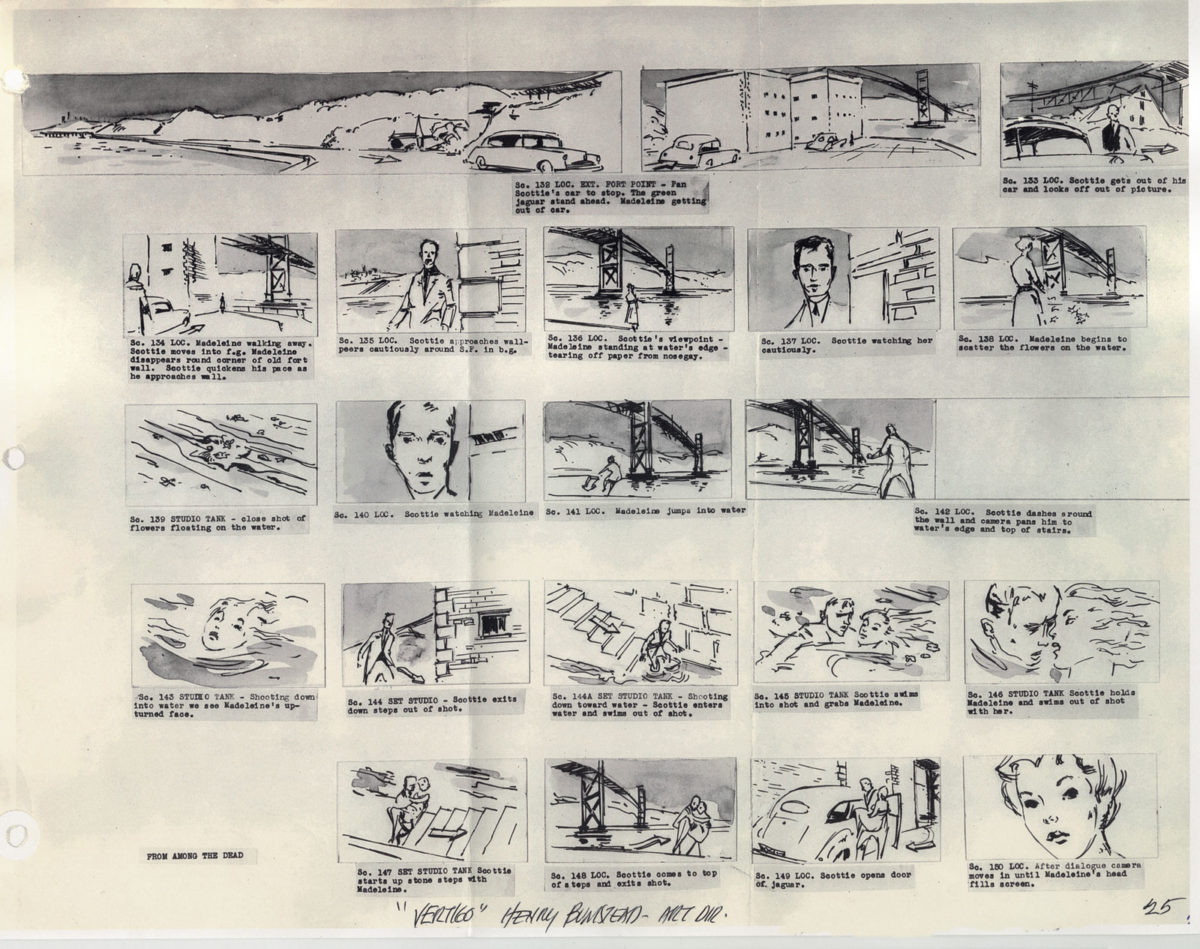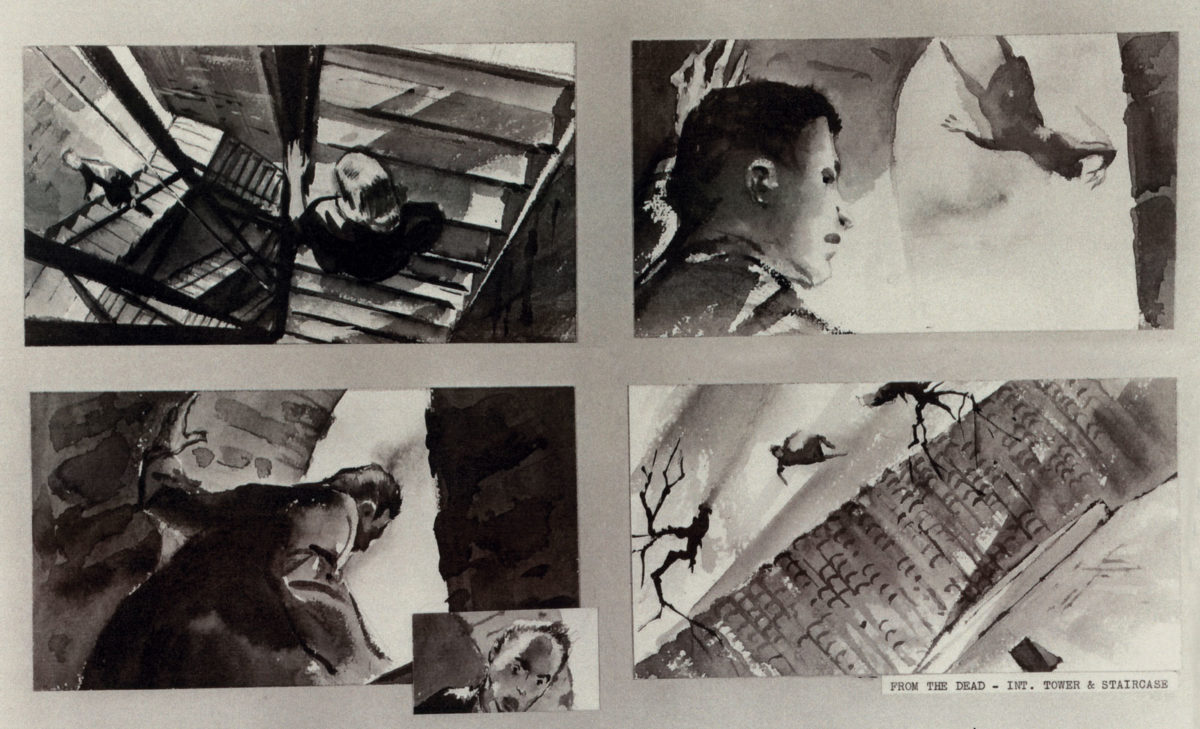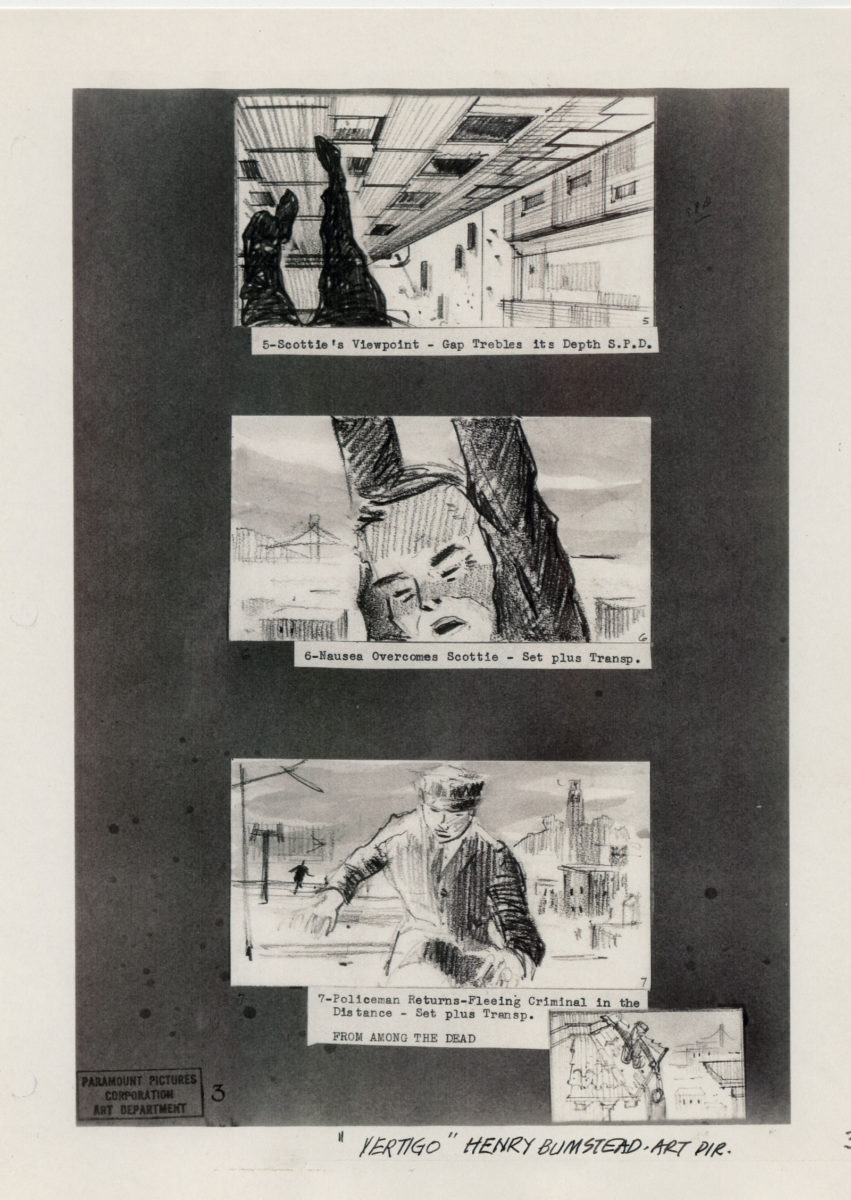Born 125 years ago, Alfred Hitchcock’s unparalleled body of work is a towering influence on virtually every corner of filmmaking. But what new insights can we gain into his process? Alfred Hitchcock’s Storyboards, a new book arriving next week by novelist and Hitchcock scholar Tony Lee Moral, contains a wealth of knowledge as it pertains to the Master of Suspense’s thought process. Ahead of its release from Titan Books, we’re delighted to share exclusive storyboards and more from the book, as well as a chat with the author.
Focusing on the storyboards for nine of Alfred Hitchcock’s classic movies––Vertigo, The Birds, Psycho, North by Northwest, The 39 Steps, Torn Curtain, Marnie, Shadow of a Doubt, and Spellbound––the coffee-table book includes never-before-published images and incisive text putting the material in context and examining the role the pieces played in some of the most unforgettable scenes in cinema.
When did you first come across these storyboards?
When I was writing my book “Hitchcock and the Making of Marnie,” 25 years ago now, I saw the storyboards for the racetrack and hunt sequence at the Academy of Motion Pictures and I was impressed about the level of detail. I interviewed the production designer Robert Boyle and storyboard artist Harold Michelson who had a wealth of knowledge and memories about working on The Birds and Marnie and I knew that was just the tip of the iceberg. Hitchcock’s storyboards are held at the Margaret Herrick Library in LA, and the Hitchcock Estate gave me permission to reproduce them which is very exciting to share with readers today.
Exclusive storyboards from Vertigo.
When looking at the storyboards and notes, what did you most glean about Hitchcock’s mastery of the visual language of cinema?
Hitchcock was the master of camera logic, he instinctively knew where to place the camera. Through storyboarding each scene, he likened them to the notes on a sheet of music being conducted by an orchestra. Hitchcock was a very technical director and was keen to manipulate the audience’s emotions, the highs and lows, and storyboards were central to his practice. Think about the shower scene in Psycho, the crop duster attack in North by Northwest and the crows gathering silently on the jungle gym, are all examples of carefully orchestrated storyboards.
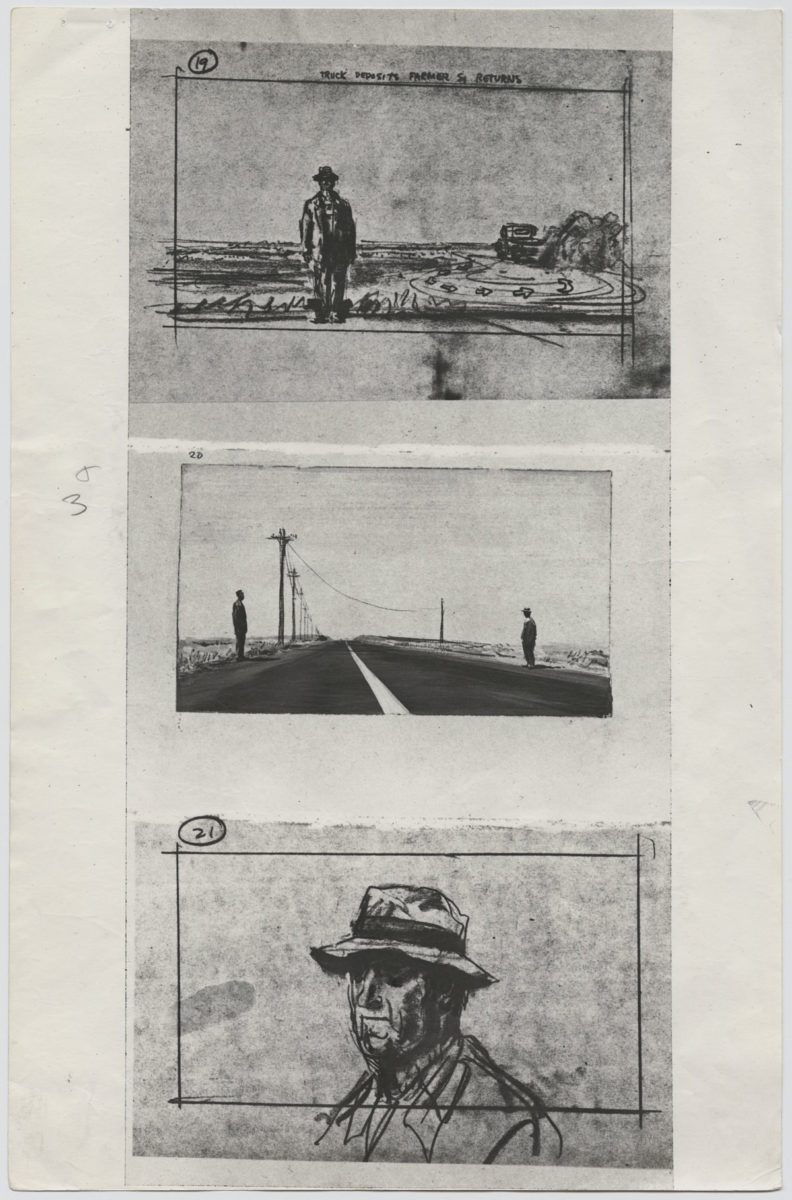
Exclusive storyboard from North by Northwest.
After studying the storyboards you’ve featured in the book, did you revisit the films and notice new details?
Studying the storyboards definitely opened my eyes to films which I hadn’t focused on before such as Shadow of a Doubt and Spellbound, and what was apparent was the level of detail from both Hitchcock’s early films and his move to Hollywood. In Shadow of a Doubt, storyboarding and set design are very important to show a typical American family and the chaos that erupts when a sinister force, in this case Uncle Charlie, comes to visit. Spellbound is another film where the dream sequence was storyboarded and Hitchcock was very interested in dream theory and analysis.
What are your favorite shots in Hitchcock’s oeuvre?
I love the sweeping crane shot in Notorious where the camera focuses in on the key in Ingrid Bergman’s hand. Hitchcock employs a similar shot in Marnie at the start of the party sequence. I also favour the forward tracking shots when Lila Crane played by Vera Miles explores the Bates house, that always sends a chill down my spine. The Vertigo zoom dolly shots when James Stewart chases Kim Novak up the bell tower are also justly famous. With all these shots, Hitchcock was keen to convey the emotions of the central character and he was a very subjective director who was interested in feelings.
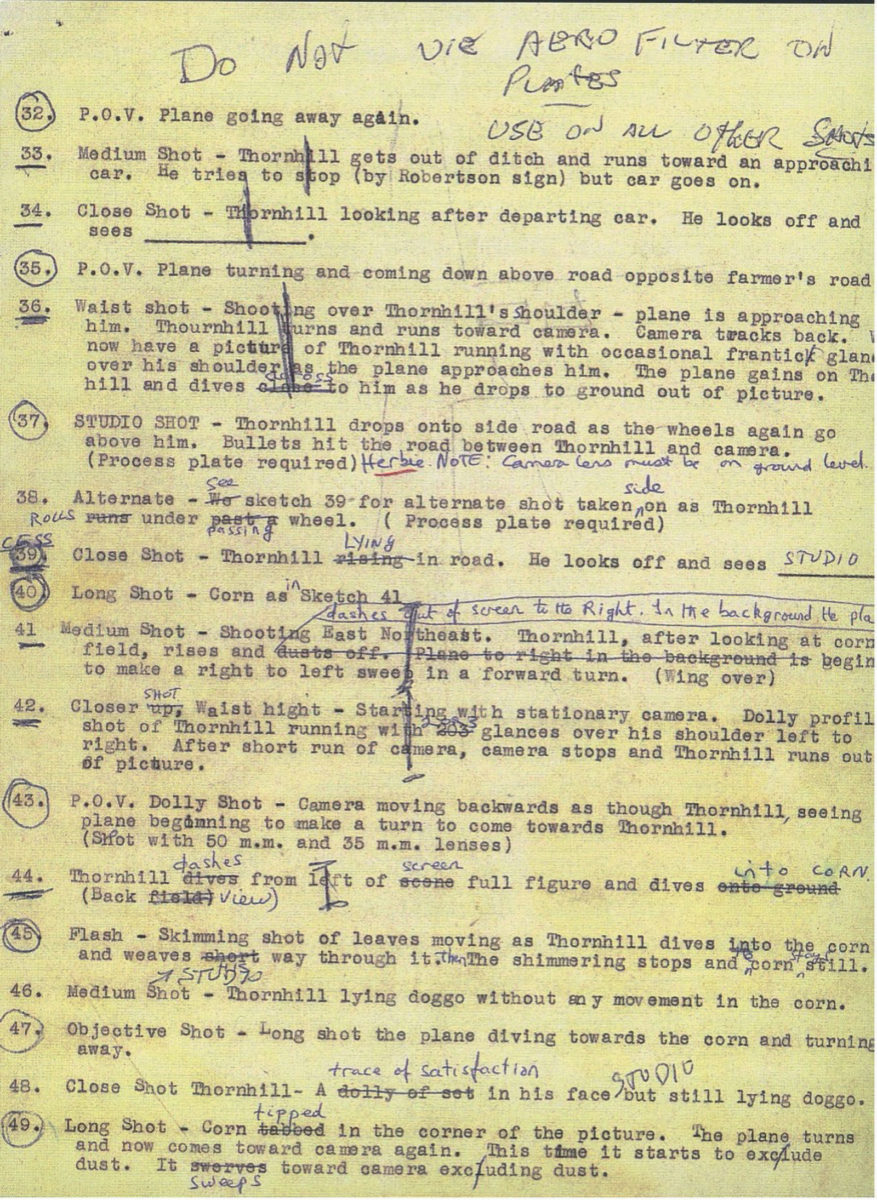
Exclusive script notes from North by Northwest.
As a Hitchcock scholar, with his vast body of work, what do you think are his most overlooked film(s)?
Under Capricorn is a gorgeous technicolour film with Ingrid Bergman which is very much overlooked, mainly because it’s a costume drama which is atypical of Hitchcock. Topaz is another film which is often maligned but has much to offer, especially in the Harlem and Cuban sequences and I Confess is the film that started my interest in Hitchcock with its moral ambiguity and Catholic sense of guilt. Like all good films, the best Hitchcock films demand repeated viewing, and the storyboards are an excellent guide for those indelible images that remain with us today.
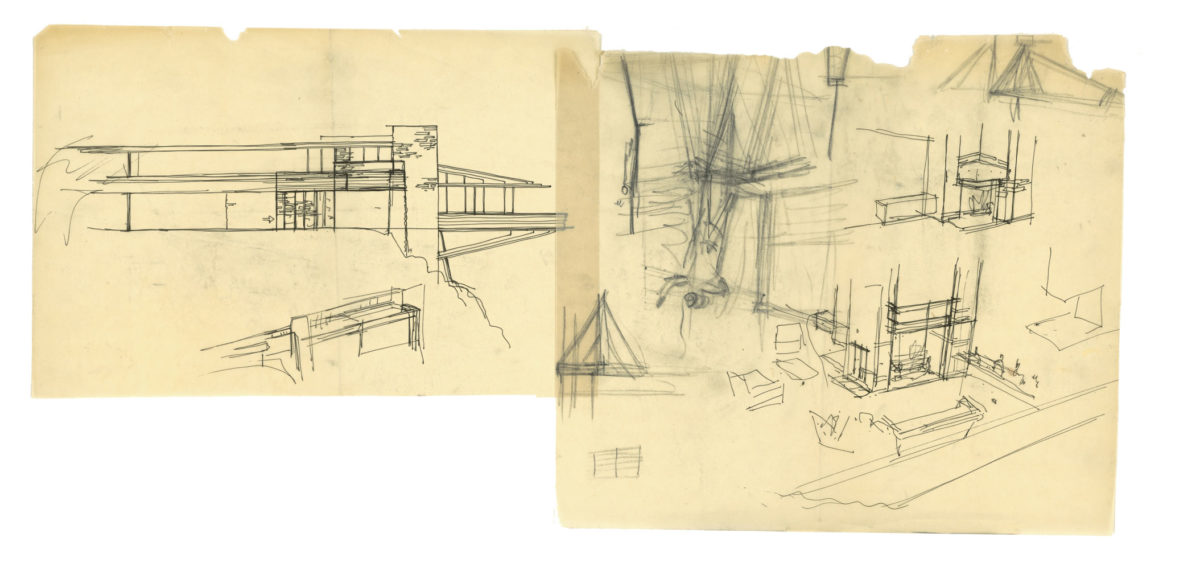
Exclusive illustration for North by Northwest.
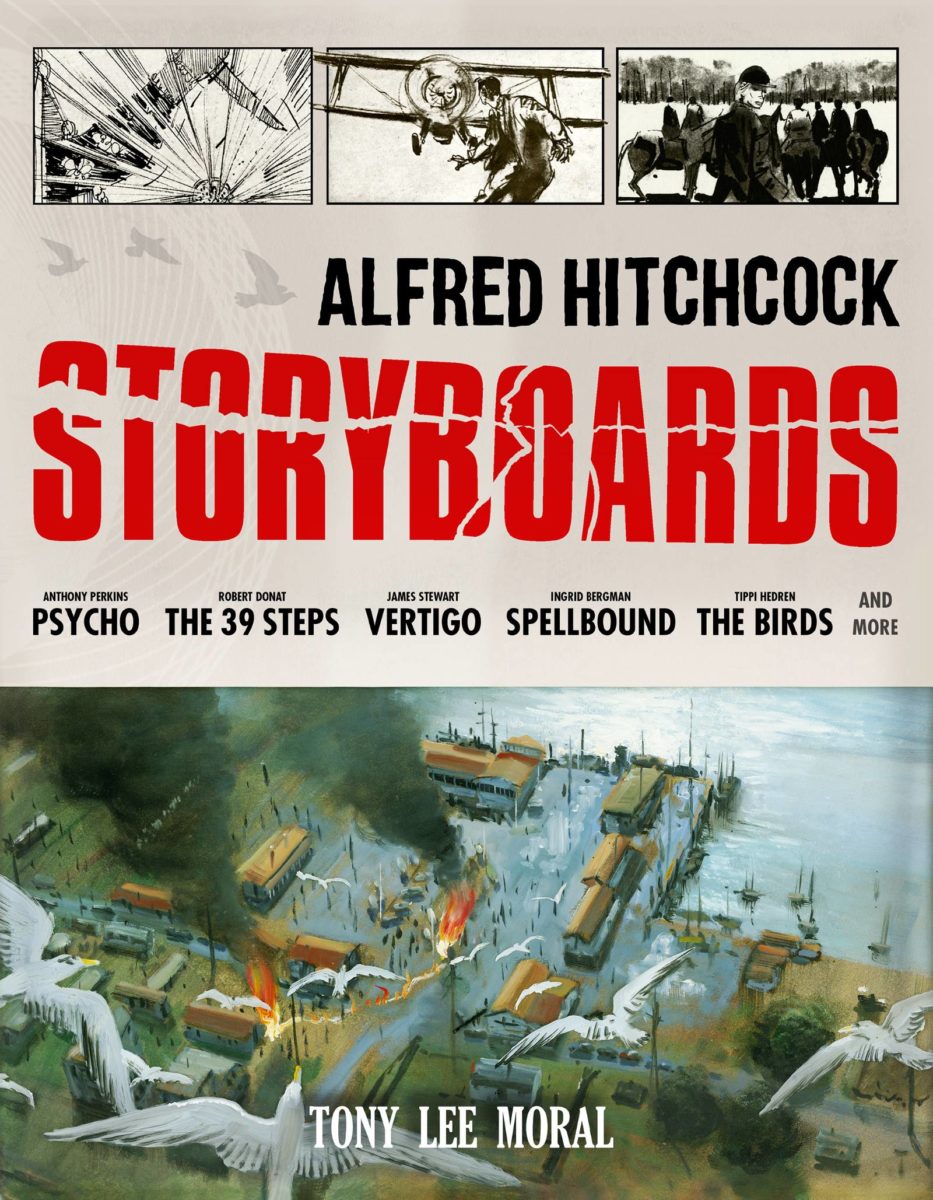
Alfred Hitchcock Storyboards arrives on February 6 from Titan Books.

